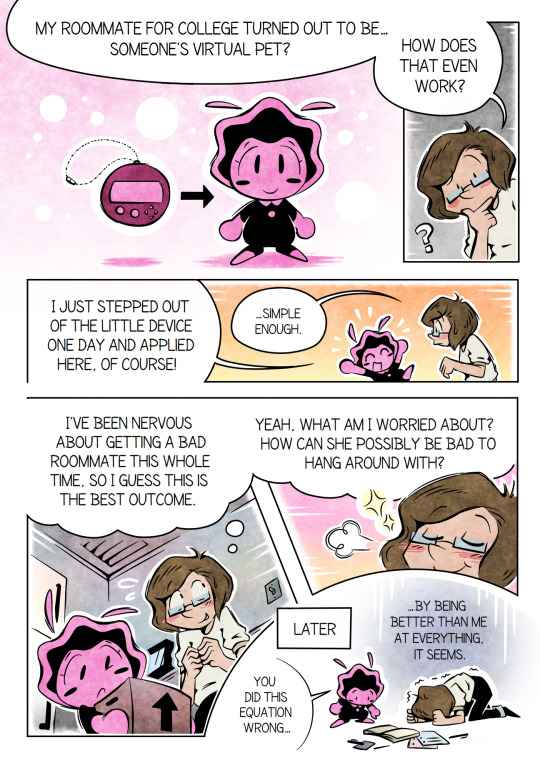#Pilot testing
Explore tagged Tumblr posts
Text
A TEST OF CONTROL (18+)


2.3k words. PART 1/? not for minors! shoo!
Pt 2 -> here ♡ Pt 3 -> here
After being stood up three times, MC decides Caleb won’t earn her forgiveness without enduring some playful punishment. What starts as teasing quickly becomes a torturous test of Caleb’s self-control as she takes charge, drawing out every ounce of his restraint.
(Self-Indulgent and heavily inspired by 2-3 of Caleb’s lines in the cafe)
cw/tags: f!MC(reader), slow burn, unresolved sexual tension, dom!mc, sub!caleb, pilot!caleb, established relationship, teasing, punishment kink, edging, light power play, breath, withheld pleasure, delayed gratification, soft dom/sub, emotional tension, begging, dirty talk, gravity evol, fluff and smut, romantic smut, pining, touch, reward/punishment, kisses all over, oral tease, tension relief, switch dynamics, intimacy, NSFW, dominant/submissive, dubcon (mild), restraint, light pain play (scratching), suggestive language, mature themes, power imbalance, sensory teasing

MC is getting very, very annoyed with Caleb. He's canceled spending time with her twice with “emergency business” for the fleet. And even though when things like this happened before, Caleb tried his best to make it up to her, this time she figured she wouldn't be pleased until he received what she deems as a fair punishment. She sits on her couch, arms folded, waiting and waiting. ‘I can't believe he canceled two days in a row and still has the nerve to be late today!!’
She flips through channels before hearing light boots and the sound of dangling keys. Then a soft rhythm of knocks follows.
“It's open.”
She hears the soft click of the door but doesn't get up from the couch. Instead, she turns away and pouts, her head resting on the armrest. The footsteps come closer until Caleb is in front of her face, squatting down to eye level.
“Hi, pipsqueak. Are you mad at me?” His big pretty eyes look like a sad puppy's.
“Guess.” She pokes him in the forehead with her finger, frustrated at how fast she wants to forgive him. “I was excited to see you. Two days ago, yesterday, this morning…” She scowls.
Caleb tries to hide a smirk at how bratty she's acting, knowing this show she puts on is a necessary and very cute step towards quick and easy forgiveness.
“I'm sorry, cutie, you know I hate making you wait. The fleet—”
She pushes a finger to his lips before he can finish. “Shh. It's done anyways, no use explaining it again. But… I still haven't come up with a proper way to punish you.” She sits up properly on the couch and turns off the TV, the motion turning her away from him. But not before seeing his somewhat surprised expression.
He comes to sit next to her on the couch and suddenly her head is being turned to him. “Punish me however you like, I'm all yours, pips” She glares at the use of his gravity evol and shoves him onto his back as soon as he lets go of her face.
“However I want, hm?” She hums.
Caleb lets out a soft “oof” as he lands on his back, laughing under his breath. His arm flops over his forehead like he's fainted. “Ah, Cruel Mistress, striking a defenseless man,” he groans dramatically.
MC narrows her eyes. “You don't look very sorry.”
He peeks at her through his fingers. “Maybe I'm just waiting to see what my punishment is.”
She climbs over him slowly, straddling his hips, and he swallows a bit too obviously. Her hands rest on his chest, steady, firm.
“You made me wait,” she says, low. “You got my hopes up. And you know how I get when I'm disappointed.”
He nods quickly. “You get pouty.”
“And a little mean,” she adds with a smirk, “Don’t you dare forget that.”
“Dangerous combination.” His voice is breathy now, no more teasing. “What are you going to do to me, pipsqueak?”
She leans in close, brushing her nose along his jaw. “You’ll find out. But not all at once. You’ll get it in doses… like I got my disappointment.”
His breath gets a bit heavy. There's no hiding the rises and falls of his chest as he searches for ways of maintaining control of himself. He doesn't touch her, his arms slack at his sides, his right arm hanging off the side of the couch.
MC looks him in the eyes now, her face centimeters from him, and something dubious lights her expression. She holds his face in her two hands, their breath still mingling softly as Caleb searches her face for her next move, holding himself completely still. Her hips press into his abdomen, her arms across his chest, her head tilted as she moves his chin down to look at her. “I know what I will do.”
He swallows again his Adam's apple bobbing. “Yeah? What is it, then?” His voice is a bit husky and low, she can almost hear the restraint.
“Your self-control test is in order, I think.” She whispers into his ear, the action making him shiver beneath her.
“My self-control test?” He says softly, eyes darting across her face for any sign of not meaning what she said. “Then do you want me to pass with flying colors... or fail miserably?”
She hums, low and thoughtful, the sound skimming along the shell of his ear. “That depends…”
Her fingers trail from his jawline down to the collar of his shirt, brushing barely-there touches that make him twitch under her. Her hips shift just a little, barely, but enough to remind him who’s in control.
“On?” he asks, and it’s a little breathless, a little desperate.
She meets his eyes again, her expression unreadable for a beat. Then, with a wicked little smile:
“On how entertaining your struggle is.”
He lets out a breath that sounds like a laugh caught in a groan. “Oh, I see. You want a show.”
MC nods, mock-innocent. “I waited three days. Seems fair I get some entertainment.”
“Then I hope you enjoy watching a man fall apart, your highness,” he mutters, trying to keep still even as her hands dip just under the hem of his shirt, palms warm against his skin.
She pauses, enjoying the tension curling tight between them. “You’re not allowed to move unless I say so,” she adds, brushing her lips against his cheek – but not quite kissing him. “And no evol. If I even feel a tug of gravity...”
“I won’t,” he promises instantly. “No evol. No hands. No movement. Just...” Torture.
She chuckles, finally settling her weight more firmly on his hips. “Exactly.”
His hands clench at his sides, his breathing uneven, and she can feel the tight coil of restraint beneath her like a drawn string.
“I should be mad at you more often,” she muses aloud. “You’re kind of cute like this.”
He closes his eyes with a strained smile breathing softly out his nose in an ironic chuckle. “Glad I can be of service.”
“Good,” she whispers, and leans in again. “Because I’ve just barely gotten started.”
His eyes flicker open at that, dark with anticipation and lust. She sees it all – how tightly he's wound, how badly he wants to move, touch her, flip them over. And she also sees how hard he's trying not to. Her hands, splayed open, find their way slowly up his torso as she moves her hips, straddling him lower. He bites his lips, eyebrows knitted, breath catching as she can feel through their pants exactly how much he's holding back.
“Take your shirt off, Caleb.”
He doesn’t move. Not at first.
His eyes search hers, questioning, hopeful, desperate for permission, because technically, that would mean breaking the rules. And she's made those rules very clear.
So she just raises an eyebrow. “Huh? You need help understanding basic commands now, Pilot?”
That’s all it takes.
Caleb sits up slightly, just enough to reach behind his neck and pull the shirt over his head in one smooth motion, jaw tight the entire time. She watches the shift in his shoulders, the flex of restraint even in something so simple. He drops the shirt to the floor beside the couch without taking his eyes off her.
“Much better, good boy.” She drags her palms across his now heaving chest, letting her nails trace faintly, enough to make him suck in a breath through his teeth. She's always loved his muscles, and as they flex with tightly bound desire she drinks him in with her gaze and careful touch.
“Remind me to never upset you again…” he groans, laying back down as she pushes him gently.
“You won't forget, I'm sure.” She smirks at him, truly enjoying him being so helpless.
“Please, can I fail just a little, pipsqueak?” He begs huskily, almost making her weak enough to forget her plan, but it's not enough.
“No way. Pass this with flying colors like you have everything else, my sweet Valedictorian. Perfect marks. Be a good boy.”
He nearly whimpers and she revels in it.
“You’re taking this seriously,” she whispers, letting a finger trace the edge of his ribcage, “I appreciate the effort.”
“I’m trying so hard,” he grits, voice tight, strained, barely holding onto control. “You have no idea.”
“Oh but I do.” She grins devilishly at that, leaning in and planting a kiss to his throat.
He trembles beneath her. His muscles are tense, breathing shallow– but he doesn't move. Doesn't grab, and he doesn't flip her over like she can tell he's dying to. His pulse thumps erratically against her lips.
“Three days,” she mutters softly, breath hot against his throat. “Do you know what that does to a girl?”
“I’m learning,” he groans, eyes fluttering shut like he can’t take looking at her anymore without breaking her so called “rules”.
She leans in again, lips at the shell of his ear. “And if I decide I don’t want to let you pass this test?”
He grunts – wound up, helpless, so full of wanting it cuts through the air like static. “Then I’ll fail spectacularly,” he whispers, “but only if you make me. I'm already on the edge of it.”
She giggles softly, unable to contain how that pleases her. Her hands delicately grace his throat, resting there as she kisses just below his ear, then his jaw, the corner of his lips. She slides her hands down his trembling body like reading scripture in braille as she kisses his throat (twice), his chest, his ribs…
When her hands rest they are on either side of his waist, thumbs brushing up and down his stomach. His fists clench as she kisses his sternum, just above his belt, darting her tongue out for a millisecond. He twitches his hands, and in his pants.
“I'm one move away from failing, MC," his voice is a husky groan as his head is thrown back, hands balled into shaking fists. "Is this a punishment... or...?”
“…Or?” she echoes, voice low, breath warm against his skin. She doesn’t lift her head. She just hovers there, lips parted just above the line of his belt, her fingers now resting unbearably light over his hip bones. The control in her touch is both maddening and deliberate. Calculated.
“...Do you want to keep going?” Caleb’s voice is gruff, harsh with self-control and want. “If you keep going, I won't be… able… to let you off the hook. Even if you claim you're doing… it on a whim…” He's breathless, frustrated, his knuckles turning white with gripped restraint.
Her reply is syrupy and as sweet as it is torturous. “Shh… Are you forgetting” Another kiss to his sternum... “Who” A kiss to the cool metal of his buckle. “Is in charge?” Her breath hovers below his belt, her mouth centimeters away from his clothed arousal.
“Please…” Caleb chokes out, desperately hanging by a tight thread of control.
She lifts her head at this, allowing the word to linger in the air for just a moment before responding with a sweetened smile and a whispering voice. “You sound so desperate, Caleb… I like this… the sound of you begging for me… Music to my ears.”
He groans and it's deep and guttural, pained pleasure wrapped in reverence. His eyes flutter open, just enough to meet hers through the haze of desire and restraint.
“That’s because I am desperate,” he grits, voice shaking. “For you.”
Her lips curl into something between a smirk and a smile, satisfaction, maybe. Or mercy, laced with a promise she hasn’t decided to grant yet.
“You’re doing so well,” she whispers, almost mockingly tender as her fingers dip just under the waistband of his pants, but don’t venture further. Her touch is light, barely there, a spark without flame. “And you’ve been so obedient.”
His hips twitch, bucking just slightly beneath her, involuntary, restrained.
“I told you,” he breathes, “I’ll do anything. Just… please.”
She hums again, eyes half-lidded. “Mmm… you almost sound like you're sorry.”
“I am sorry,” he groans. “I’m so sorry.”
That does it.
She sits up slowly, eyes locked with his, hands dragging up his sides as she speaks.
“Good. Because only good boys get what they want.” A beat. “And you’ve been so good for me.”
He barely has time to exhale before she leans in again, this time with intent.
And then, all at once, she kisses him hard, pushing him flat against the couch again as the dam of tension finally, finally snaps. His hands rise, cautiously at first, then urgently, moving to grip her waist, as he grounds himself in the fact that yes, finally, the test is over.
She moves to unbutton his pants and undo his belt, pulling it out of his pants and tossing it to the floor with a clank. Suddenly, Caleb's evol is hovering her above him, suspending her in air until he flips their positions.
He's lifted up above her his hands and buff arms on either side of her head. “I might… fuck” he kisses her collarbone while moving one arm to take off her shirt. She lifts her arms as he pulls it up and off her, and the fabric joins his on the floor.
“You might what?” She asks him, her voice cracking with anticipation.
He bites her neck, drawing a mangled moan from her at last. He's breathing like an animal and already damp with sweat. “I might have… run out… of self control.”
“You earned it… do your worst– and don’t make me wait for it.” She mutters, gripping him tightly. Knowing that with him, she always gets what she wants. One way or another.

#dom!mc#dom!reader#sub!caleb#pilot!caleb#caleb x reader#caleb x mc#lads caleb#love and deepspace caleb#caleb#love and deepspace#lads#fanfic#lads fanfic#caleb fanfic#love and deepspace fic#lads fic#caleb fic#lads smut#caleb lads#lads caleb smut#caleb lads smut#caleb smut#test of control series#my fics
369 notes
·
View notes
Text





more Ninjagelion AU
Setup: In the aftermath of a cataclysmic event on the Dark Island where humans accidentally awakened an entity known as the [OVERLORD] the world was plunged into eternal chaos. 20 years later, Ninjago has managed to rebuild. Now in New Ninjago City, a bustling and lively hub at the heart of Ninjago, has been under attack by monsters- onis, dragons, serpents, unexplainable beasts,- creatures made from the [OVERLORD]'s darkness. Luckily the Special Division ELEMENTS is here to protect the realm from these monstrous threats, with the NINJA mechs. This cant be possible without some valuable members of the team!
Characters, lore, and more ↓
Characters:
Pixal: In this au she's a human scientist, and probably the one person who knows the most about how the NINJA mechs are created. She's in charge of the technical division, and head of research and development. During a monster battle, her order's are second to Cole's. Her highest priority is the integrity of the mechs, to the point she might be a bit negligent of the safety of their pilots. Pixal is deeply involved in some suspicious agendas involving the secret entities hidden under the base, and while she's the most knowledgeable person in the force, she's not the most trustworthy. Pixal is Zane's personal "doctor" and knows more about his schematics than anyone else. She created the Nindroid plugs (aka the Dummy system, an autopilot of sorts) with his personality data. Pixal is also one of the few people who know what happened to the original Dr. Julien and Echo.
Jay: For a little history on him, Jay is on the younger side, have graduated from college a couple of years ago. He originally interned here as an electrical engineer in the Weapons Deparment, but Pixal saw his skill and ingenuity and gave him an unrefusable return offer in the R&D department as her right hand. Jay's parents, Ed and Edna Walker were colleagues of Cyrus Borg and were involved in the engineering and design of the Geofront and NNC's civilian safety infrastructure, so Jay's always been somewhat interested in ELEMENT's work. It was kind of a dream come true when the Pixal Borg hired him. During monster attacks, Jay's in charge of making sure the NINJA mechs operate properly, have access to their weapons and gear, and making sure the NNC fortress moves as needed. Jay's always seen with his goggles and he almost never follows uniform protocol.
Jay is also one of the few Technicians who personally work with the Pilots, he's one of the first people Lloyd warmed up to at ELEMENTS, and he becomes kind of a big brother figure to him after one particularly crazy mission when he has to personally go out onto the field with Lloyd in Unit-01. When Nya arrives the pair work together a lot outside of pilot training, but Nya definitely likes him and he... needs to figure some things out. whoops!
Skylor: Having grown up in the aftermath of the 2nd (Overlord) Impact, Skylor's seen a lot of destruction and cruelty, even first hand from her own father who lead a doomsday cult that wreaked havoc on innocent communities trying to survive in the near apocalyptic event. Vowing to protect the world from similar chaos, she joined the NINJA program's tactical division. When the monster attacks began, she's in-charge of monitoring the enemy's health, pilot life signs, and mapping.
Dareth: His last name is Presley bc of the Elvis hair and inspiration lmao. He's not really a high ranking member of the organization but Cole and the others seem to really trust him, despite his mess ups. Dareth normally handles ferrying radio messages between ground teams and mission control. Dareth is a relaxed guy who values a positive work environment, even if that kind of makes him a bad employee. He's a very good uncle figure to a lot of members of ELEMENTS
MORE Cole: Cole is the leader of the tactical division. He was drafted into the military when he was only a young teenager in the aftermath of the [OVERLORD] but he was recognized by Wu and not long after he completed college and grad school he was quickly hired by ELEMENTS to oversee the tactical division. He's vengeful towards the Overlord's darkness monsters because his mother Lily was the captain of the disastrous expedition to the Dark Island 20 years ago. The dog tags he wears are his own and his mother's.
Lloyd and Zane, on neural headsets: As pilots of a NINJA mech they have a lot of pressure on them, obviously this can cause a lot of mental turmoil and stress. In order to pilot a mech they must synchronize their own mind to their mech's soul*, so stress isn't really a good thing for a pilot to have. Zane was programmed to not experience such emotions, but over the course of the series, its proven that he grows to feel quite strongly and become more human. Despite his programming, the lack of emotion early on was actually a detriment to his ability to pilot, since the NINJA soul wouldn't be able to synchronize it's feelings with an entity that feels nothing. Sometimes its necessary for pilots to wear more complicated neural headsets and spinal connections for more controlled sync testing. During the cross-sync experiment when Zane and Lloyd traded units, they were stuck wearing extra uncomfortable test suits -- too many wires and junk! The only downside to extra connection is that the mech could overload and go berserk. (which big surprise, happened!), so usually Lloyd, the designated Unstable Pilottm, only needs the barebones neural interface in most situations.
#lego ninjago#ninjagelion au#evangelion#I have a really fun idea Jay for this au. even when he's literally just tech support he's still so fun and cool and badass. to me.#r.e. ja/ya: they're both adults in this au but nya being a pilot and jay being a higher rank makes the power dynamic a little tricky?#eh see it as one sided or unrequited for now#pixal and zane mystery will be elaborated on later but they're *definitely* not romantically involved in this au lol.#I'm also gonna come up with more mech design ideas and alternat plugsuit stuff. especially the really crazy scifi ones.#i have this mini arc with unit-00 cross synch test and morro in mind that combines the magi/supercomputer hijack infection angel storyline.#and poor lloyd does (not) want to be stuck tangled up in so many cables and wires with morro in the cockpit with him.#my art#doodles#pixal borg#jay walker#skylor chen#dareth ninjago#zane julien#cole ninjago
353 notes
·
View notes
Text






TWENTY ONE PILOTS ↳ OVERCOMPENSATE
#twenty one pilots#clancy#overcompensate#tyler joseph#josh dun#mine:gif#*top#this was a test gifset for my pillowfort account
159 notes
·
View notes
Text

College life with a particular roommate...
#(this is a test page for a comic involving these two- trying to decide on a solid style and direction)#(I did make a good 20 page 'pilot' type of comic for this back in november but i ended up refining the story/tone a LOT more since then)#my college roommate is a virtual pet#mcriavp
633 notes
·
View notes
Text

“cant change what you’ve done start fresh next semester”
#did this after having a breakdown in state testing today#i had three pens a vauge idea of what cars looked like and a dream#this song also hits a little too close to home (-suicidal kid who keeps getting anxiety attacks in school)#twenty øne piløts#twenty one pilots#tyler joseph#josh dun#tøp#clique art#frankies art#ns art
508 notes
·
View notes
Note
I know mic is afraid of bugs and all but can we introduce mr banana eel mic to a banana slug and see what he thinks of it?


He doesn't like the slime. Aizawa thinks he's a huge hypocrite.
#mermic au#eel!mic#lighthouse keeper aizawa#hizashi yamada#shouta aizawa#for some reason i've forgot how to draw?#every time I try it takes me ages to get to what I want#I used to be able to pump these asks out like 3 a day#what is happening to me#I think it's because all I want to do is play Test Pilots#also aizawa picking up the slug with his bare hands bc he's a casual menace to society
128 notes
·
View notes
Note
If you have a moment, or if you could signal boost this, I would be very grateful for any recommendations for vintage comedies featuring boats.
My three year old is obsessed with boats. He also insisted he wanted to watch Sabrina with me, and apparently enjoyed it very much.
I am unsure what exactly he found pleasing about it besides the brief boat appearances--inquiries were inconclusive--but he indicated that he'd very much like to try more classic films as long as they contained boats occasionally.
Thank you for any help you are able to provide.
I am a huge fan of your three year old and we need to help him immediately.
The Philadelphia Story contains a model boat, but its appearances are so infrequent I’m guessing he probably will not be satisfied. To Have and Have Not and Key Largo both involve Humphrey Bogart piloting small boats, so he might enjoy those in a similar vein to Sabrina. If you’d like something colorful and bright, there is 1950’s Treasure Island with Robert Newton—a pretty mid movie by my dim recollection, but he may like Newton’s very scrungly pirate on his big boat. If your kid can handle the possibility of murders, there is also the Miss Marple mystery Murder Ahoy, which has a very funny cast running around a small docked boat.
If his boat interest possibly extends to other modes of oceanic transport, I also always recommend Yellow Submarine, which is a fantastic animated movie that spends a ton of time exploring fantastical seas and has a great submarine as a main character. If you enjoy gorgeous, strange visuals and are not allergic to Beatles music, you might love this movie too—it is a beautiful work of art.
I hope other help in the reblogs! I’m definitely missing some iconic boat movies (like mutiny on the bounty, which I haven’t watched yet)—everyone help this wonderful kid out.
EDIT: I am an idiot and Key Largo might be too scary for a little kid. (People die onscreen and there are gangsters.) Murder Ahoy might also fall into this category. Someone help out our asker who actually has a grasp on what’s appropriate for a little one. (I stand by Yellow Submarine, though.)
#before anyone yells at me for not including capt blood I do not like capt blood & wont rec.#yes baz is there w an iconic bad french accent and yes it’s clearly a test pilot for everything that makes Robin Hood work. but It Sucks.#asks
175 notes
·
View notes
Text

You would’ve made a great Challenger, Hal.
(Challengers of the Unknown Volume 5 #4)
#challengers of the unknown#green lantern#hal jordan#test pilot#christopher cantwell#sean izaakse#amancay nahuelpan#dc comics#comics#2020s comics#matthew ryan#red
30 notes
·
View notes
Text
ruhgh the pilot. the pilotttt.......... the patient getting wilson to reflect on house's actions and he barely has to examine before determining with a little smile that "yeah, he cares about me :) " like it's such a little thing. utterly precious. but also very smoothly gets the audience to think similarly: people will say anything, it's what they do that really shows what they mean and how they feel. love is a verb love is a doing word
#house md#the pilot is sooo strong#very pretty too but that's not here nor there rn#and like you understand on a surface level how all the stuff house does raises hell around the hospital#particularly wrt a patient's treatment#like yeah he does malpractice and he can be caustic which to any passerby would look like he's torturing people for the hell of it#but we see it all go down from house's perspective so we see how thoroughly he dedicates himself to his patients#he'll run tests ON HIMSELF if he must if it will benefit the patient#he'll speak carefully yet not mince his words if he talks to the patient 1 on 1. he DOES want them to get better. whatever that entails#he cares. just not in a way that is typical or even believable at times#and caring about wilson???? EXTREMELY OBVIOUS but only if you like. Get house#son of coma guy shows this mutated endearment be reciprocated#by way of house urging wilson to leave so he's safe from legal harm when. yknow#“i don't want to push this until it breaks”#only then for wilson to go and establish an alibi for BOTH of them#aouruurhghhghh i'm going to start punching HOLES IN THE WALLS
83 notes
·
View notes
Text

The Douglas Skyrocket D-558-2.
#douglas aircraft company#douglas aircraft#fighter aircraft#x planes#experimental planes#experimental aircraft#prototype aircraft#aircraft#vintage aircraft#military aircraft#military aviation#military jets#jet aircraft#u.s. military#test pilots#u.s. navy#united states navy#research aircraft#rocket-powered aircraft#rocket-powered planes#supersonic aircraft#scott crossfield#douglas skyrocket d-558-2#douglas skyrocket#douglas d-558-2#douglas skyrocket d-558-ii#douglas d-558-ii#the right stuff
26 notes
·
View notes
Text
Also apparently people are upset that Do No Harm is only eight chapters…meanwhile I’m sitting here like…….what did you expect??? It’s AI slop. It’s not even real work. How could you reasonably expect what is very clearly a story almost entirely (if not, completely) generated and stylized by AI to sustain itself for longer durations?
#other stories today definitely have AI usage in them#but these pilot stories I can say with confidence are almost completely AI-generated#I don’t know why people are shocked#like there was clearly no effort put in#they obviously didn’t even finish developing it before they released the first two chapters#I mean look at the spy I married and our summer crush#the first two chapters of both were test runs#and they didn’t get enough traction#so they didn’t get finished#now back in my day 👵🏻 choices stories got finished no matter their popularity#because you know…HUMANS wrote them#hell they even crunched AtV down from 2-3 books into one because it underperformed so badly#but they still FINISHED it#and yeah they abandoned MW2 and Hero 2 but they finished the first books#so uh yeah why are people so surprised by the lack of effort and chapters and content in DNH#it’s…AI#any human involvement is limited#choices stories you play#playchoices#choices stories we play#pixelberry#pixelberry studios#playchoices fandom#choices stories you play fandom#choices stories we play fandom#anti do no harm#choices do no harm#choices dnh
41 notes
·
View notes
Text

#Gamer Dilbert#Powerup Comics#Wally#CEO#He just failed his pilot's test and as we all know he manages stress by playing the alpine horn#Webcomics#Comics
57 notes
·
View notes
Text

GUUUUYS CAM SOMEONE HELP ME WITH TLYERS HAND ON BLURRYS FACE HOW DO I MAKE IT SO THAT THERES FORCE BEHIND IT BROO
#i love you tyler but this wip truly is testing my never kys streak#clique#tøp clique#clique art#twenty one pilots clique#twenty one pilots fanart#twenty øne piløts#twenty one pilots#im tagging literally everything i can think of#tyler joseph#blurryface
32 notes
·
View notes
Text
youtube
10 May 1967 Astronaut Steve Austin crashed his experimental aircraft in the California desert sustaining catastrophic injuries. Injuries that required advanced science to repair him, rebuild him, into the worlds first bionic man. Enough with the silliness. On 10 May 1967 the wingless NASA research aircraft M2-F2 Lifting Body piloted by Bruce Peterson crashed during testing. Peterson suffered a fractured skull, facial injuries and lost an eye due to secondary infection in the hospital.

Peterson was commissioned as a U.S. Marine Corps 2nd LT in 1954 and left the Marines in 1960 to become a NASA aeronautical engineer and later a test pilot.

(Peterson with Star Trek actor James Doohan talking about the M2-D2 Lifting Body in 1967) During the 16th glide flight of the M2-F2 Lifting Body a landing accident caused the aircraft to cartwheel over and over destroying the craft and almost killing Peterson. This is the clip seen in the intro to the 1973 movie The Six Million Dollar Man and its spinoff TV series. Peterson also flew 17 flights of the M2-F1, two other M2-F2 flights and one HL-10 Lifting Body flight. Over his flight career he logged over 6,000 flight hours in 68 different aircraft such as the Douglas F5D-1 Skylancer, North American F-100 Super Sabre, Lockheed F-104 Starfighter, General Dynamics F-111 Aardvark, Boeing B-52 Stratofortress, Lockheed T-33 Shooting Star Variable Stability Trainer and many other aircraft. Bruce Peterson, passed 1 May 2006 at the age of 72 after a long illness.
24 notes
·
View notes
Text

Instructor Buzz Aldrin in the cockpit of a Lockheed T-33A at Bryan Air Force Base, Texas - 1954
42 notes
·
View notes
Text
every day i resist the urge to start a wayhaven pacific rim au that i know i will not finish. every day my resolve crumbles a little bit more
#back on my pacific rim bullshit#the true test of if i like a piece of media is if i pacific rim-ify it#mason who lost his memories after a highly experimental mission and hasn’t been compatible w a drift partner since#liam who is the estranged son of one of the most notorious retired pilots in the shatterdome#are you seeing it…are you seeing it…#it’s consuming me#the wayhaven chronicles#detective liam kingston#WHY IS THIS FLAGGED FOR MATURE CONTENT
24 notes
·
View notes